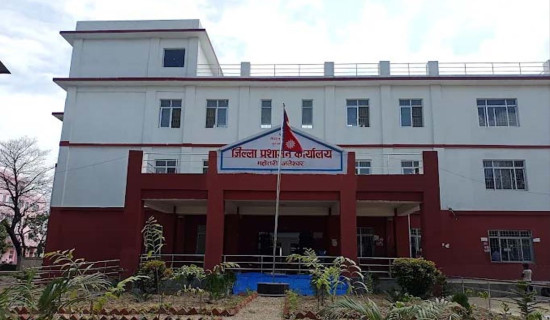- Friday, 14 November 2025
Regard For Language
Nepal is a multi-lingual and multi-ethnic country. A total of 123 languages are spoken throughout the country. But in the past, not all languages got the same level of protection because of the entrenched political system based on centralised governance. With the country ushering in democratic set-up, struggles for recognition of the languages spoken by many ethnic communities gathered momentum. However, it was only after the adoption of federal democratic system, the tradition of protecting language in line with the constitutional provision came into being. Giving continuity to this norm, on May 6, Bagmati provincial government bestowed official status to Tamang and Nepal languages. This effort deserves appreciation. In this regard, the elation exuded by the Tamang and Newar communities (who number at least 1.6 million and 1.3 million respectively, according to the 2021 census) is understandable.
The exercise in federalism necessitates that all languages spoken in the country be protected. The constitution promulgated in 2015 entitles every citizen to exercise the right to culture and religion. Besides protecting this fundamental right, the constitution ensures every Nepali citizen the right to protect and promote his/her script and civilisational heritage. In this context, the province's effort to recognise the two languages and incorporate them into the government's day-to-day functions has added new dimensions in their conservation and use.
Yet this is not the first time such an initiative has been taken. Before this, remarkable efforts have been made by various organisations for the conservation of languages. Gorkhapatra daily, for example, has been publishing contents in the nation's 43 languages in turns. For the last 17 years, the daily has been incorporating two languages in its publications – the epitome of inclusive journalism which has been lauded at home and abroad. It's clear that the daily's attaching special priority to the two languages for long now has made it easier for the province to recognise the languages.
In an effort to research, conserve, and practice all the national languages, the Language Commission has been established. The enactment of the Language Act, 2080 B.S has eased the work in this direction. The Commission has also recommended that Maithili, Magar, Gurung, Bhojpuri, Bajjika, Tharu and other languages get the same level of recognition as Nepal and Tamang languages. Besides, some local governments in other provinces have given the official status to some languages widely spoken in their regions – an exercise promoting the practice and identity of the languages. That said, owing to inherent problems in their scripts and grammar, as well as lack of uniformity among the speakers, some languages are facing difficulties in getting the recognition.
Every language is an invaluable and glorious heritage of a nation. No matter how much money we spend, it's impossible to build a language. So it is an intangible asset. Language, culture, psychology, and civilization are all inextricably linked. There are hidden knowledge, skill, and nuances about how its speakers feel, perceive and react to things in every language. This treasure should be used for the betterment of the respective communities. Once upon a time, the Newa language was not only the language of the community, but also the one used by the then royals and for communication purpose. With the due recognition, the hope that the languages will get much-needed support for their preservation has been raised.

















